-
 Bitcoin
Bitcoin $106,754.6083
1.33% -
 Ethereum
Ethereum $2,625.8249
3.80% -
 Tether USDt
Tether USDt $1.0001
-0.03% -
 XRP
XRP $2.1891
1.67% -
 BNB
BNB $654.5220
0.66% -
 Solana
Solana $156.9428
7.28% -
 USDC
USDC $0.9998
0.00% -
 Dogecoin
Dogecoin $0.1780
1.14% -
 TRON
TRON $0.2706
-0.16% -
 Cardano
Cardano $0.6470
2.77% -
 Hyperliquid
Hyperliquid $44.6467
10.24% -
 Sui
Sui $3.1128
3.86% -
 Bitcoin Cash
Bitcoin Cash $455.7646
3.00% -
 Chainlink
Chainlink $13.6858
4.08% -
 UNUS SED LEO
UNUS SED LEO $9.2682
0.21% -
 Avalanche
Avalanche $19.7433
3.79% -
 Stellar
Stellar $0.2616
1.64% -
 Toncoin
Toncoin $3.0222
2.19% -
 Shiba Inu
Shiba Inu $0.0...01220
1.49% -
 Hedera
Hedera $0.1580
2.75% -
 Litecoin
Litecoin $87.4964
2.29% -
 Polkadot
Polkadot $3.8958
3.05% -
 Ethena USDe
Ethena USDe $1.0000
-0.04% -
 Monero
Monero $317.2263
0.26% -
 Bitget Token
Bitget Token $4.5985
1.68% -
 Dai
Dai $0.9999
0.00% -
 Pepe
Pepe $0.0...01140
2.44% -
 Uniswap
Uniswap $7.6065
5.29% -
 Pi
Pi $0.6042
-2.00% -
 Aave
Aave $289.6343
6.02%
What is the probability of a rebound after the RSI bottom divergence?
RSI bottom divergence in crypto trading signals weakening bearish momentum, often hinting at a potential rebound when confirmed by volume, support levels, or other indicators.
Jun 16, 2025 at 06:50 pm
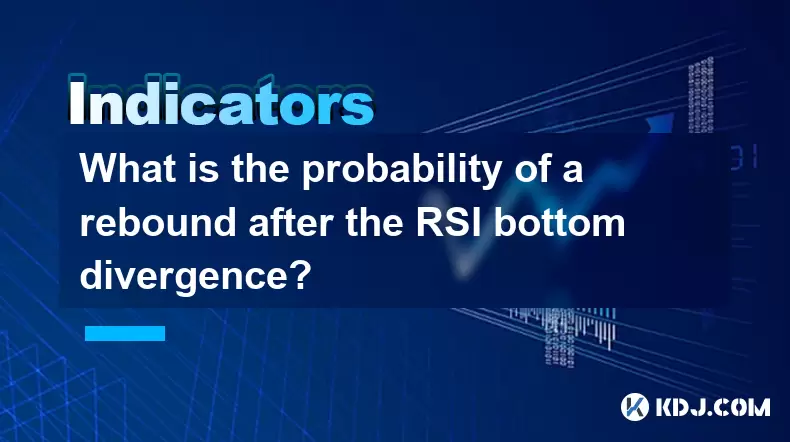
Understanding RSI Bottom Divergence in Cryptocurrency Trading
The Relative Strength Index (RSI) is a widely used momentum oscillator in technical analysis, particularly within the cryptocurrency market. It helps traders identify overbought or oversold conditions and potential reversal points. A bottom divergence occurs when the price of an asset makes a lower low, but the RSI makes a higher low. This suggests that despite falling prices, downward momentum is weakening.
In the context of cryptocurrencies, which are known for their high volatility and frequent trend reversals, recognizing an RSI bottom divergence can be crucial for timing entries or exits. However, it's essential to understand that divergence alone doesn't guarantee a reversal—it only signals a potential shift in momentum.
How RSI Bottom Divergence Works in Practice
When analyzing a chart, traders look for two key components:
- Price Action: The actual price continues to fall, making new lows.
- RSI Behavior: Despite the falling price, RSI does not confirm the new low and instead forms a higher low.
This contradiction implies that sellers are losing control and buyers may soon step in. In the crypto market, this often happens after sharp declines caused by panic selling or regulatory news. For instance, during a bearish phase in Bitcoin or Ethereum, a bottom divergence might appear before a significant bounce.
It’s important to note that RSI values below 30 typically indicate oversold territory, enhancing the probability of a rebound when combined with a bottom divergence. However, these signals should not be acted upon in isolation.
Factors That Influence Rebound Probability After Divergence
Several variables affect how reliable an RSI bottom divergence is as a predictor of a price rebound:
- Timeframe: Shorter timeframes (like 1-hour or 4-hour charts) tend to produce more false divergences compared to daily or weekly charts. Traders focusing on intraday moves must be cautious.
- Market Conditions: During strong downtrends or bear markets, even valid divergences may fail if the broader sentiment remains negative.
- Volume Patterns: A rising volume during divergence formation increases confidence in a potential reversal.
- Confluence with Other Indicators: Using tools like moving averages, Fibonacci retracement levels, or candlestick patterns alongside RSI can increase the accuracy of the signal.
For example, if Ethereum’s RSI shows a bottom divergence near a major support level such as $1,500, and there’s also a bullish engulfing candlestick pattern forming, the likelihood of a rebound increases significantly.
Historical Examples of RSI Bottom Divergence in Crypto Markets
Looking at past price action can provide insight into how effective RSI bottom divergence has been in predicting rebounds:
- Bitcoin (BTC), October 2022: BTC fell to around $17,000 amid FTX collapse fears. During this period, multiple RSI bottom divergences appeared on the daily chart, coinciding with eventual rallies toward $21,000.
- Solana (SOL), March 2023: SOL was in a steep downtrend but began showing RSI bottom divergences around the $20 mark. Shortly after, the token surged over 100% in a few weeks.
These cases illustrate that while RSI bottom divergence isn’t foolproof, it can serve as a valuable tool when combined with other analytical techniques.
Step-by-Step Guide to Confirming a Rebound Signal
To assess the probability of a rebound after detecting an RSI bottom divergence, follow these steps:
- Identify the Divergence: Look for a situation where price makes a lower low but RSI makes a higher low.
- Check RSI Level: Ensure RSI is below 40, preferably below 30, indicating oversold conditions.
- Observe Price Structure: Look for signs of rejection at key support levels or bullish candlestick formations.
- Analyze Volume: Increasing volume during divergence confirms stronger buying interest.
- Use Additional Filters: Incorporate tools like the MACD, Bollinger Bands, or support/resistance zones to validate the signal.
By following these steps, traders can better determine whether a divergence is likely to result in a meaningful rebound or just a temporary pause in a downtrend.
Risks and Limitations of Relying Solely on RSI Divergence
While RSI bottom divergence is a powerful tool, it comes with limitations:
- False Signals: Especially in choppy or sideways markets, RSI can generate misleading divergences.
- Whipsaw Movements: Sudden spikes or crashes in crypto can create fake divergences that trap traders.
- Lagging Nature: Since RSI is based on past price data, it may lag behind real-time market shifts.
- Emotional Bias: Traders may interpret divergences subjectively, leading to poor decisions.
Therefore, using RSI divergence without confirmation from other indicators or price action can lead to losses, especially in fast-moving crypto markets.
Frequently Asked Questions (FAQ)
Q: Can RSI bottom divergence occur in bullish trends?
Yes, RSI bottom divergence can appear even during overall bullish trends. It usually indicates a temporary pullback rather than a full trend reversal. In such cases, the divergence may signal a buying opportunity rather than a top.
Q: What timeframe gives the most reliable RSI bottom divergence signals?
Daily and weekly timeframes tend to offer the most reliable RSI bottom divergence signals due to reduced noise and clearer price structure. However, experienced traders often use multiple timeframes to filter out weaker signals.
Q: How long should I wait after confirming RSI bottom divergence before entering a trade?
There's no fixed waiting period. Instead, traders should look for additional confirmation such as a breakout above a recent swing high, a bullish candlestick pattern, or a crossover in the MACD before entering a trade.
Q: Is RSI bottom divergence applicable to all cryptocurrencies?
Yes, RSI bottom divergence applies to all assets, including cryptocurrencies. However, its effectiveness can vary depending on the liquidity and volatility of the specific coin or token being analyzed.
Disclaimer:info@kdj.com
The information provided is not trading advice. kdj.com does not assume any responsibility for any investments made based on the information provided in this article. Cryptocurrencies are highly volatile and it is highly recommended that you invest with caution after thorough research!
If you believe that the content used on this website infringes your copyright, please contact us immediately (info@kdj.com) and we will delete it promptly.
- 2025-W Uncirculated American Gold Eagle and Dr. Vera Rubin Quarter Mark New Products
- 2025-06-13 06:25:13
- Ruvi AI (RVU) Leverages Blockchain and Artificial Intelligence to Disrupt Marketing, Entertainment, and Finance
- 2025-06-13 07:05:12
- H100 Group AB Raises 101 Million SEK (Approximately $10.6 Million) to Bolster Bitcoin Reserves
- 2025-06-13 06:25:13
- Galaxy Digital CEO Mike Novogratz Says Bitcoin Will Replace Gold and Go to $1,000,000
- 2025-06-13 06:45:13
- Trust Wallet Token (TWT) Price Drops 5.7% as RWA Integration Plans Ignite Excitement
- 2025-06-13 06:45:13
- Ethereum (ETH) Is in the Second Phase of a Three-Stage Market Cycle
- 2025-06-13 07:25:13
Related knowledge

How to confirm the effectiveness of the average price line support in the time-sharing chart?
Jun 17,2025 at 12:56am
Understanding the Time-Sharing Chart and Its RelevanceIn cryptocurrency trading, time-sharing charts play a crucial role in analyzing short-term price movements. These charts typically display price fluctuations over a specific period, often ranging from minutes to hours. Traders rely on them to make quick decisions based on real-time data. The average ...

What does it mean when the momentum indicator breaks above the zero axis?
Jun 17,2025 at 12:43am
Understanding the Momentum IndicatorThe momentum indicator is a technical analysis tool used to measure the speed or velocity of price movements in cryptocurrency markets. It helps traders identify potential trend reversals, overbought or oversold conditions, and confirms existing trends. The indicator typically oscillates around a zero line, with value...
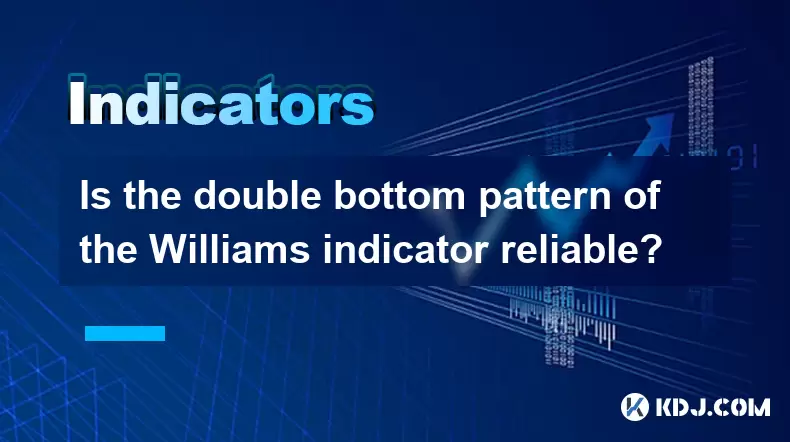
Is the double bottom pattern of the Williams indicator reliable?
Jun 17,2025 at 03:56am
Understanding the Williams Indicator and Its SignificanceThe Williams %R indicator, often referred to as Williams Percent Range, is a momentum oscillator used in technical analysis to identify overbought or oversold conditions in the market. Developed by Larry Williams, this indicator fluctuates between 0 and -100, with readings above -20 indicating ove...
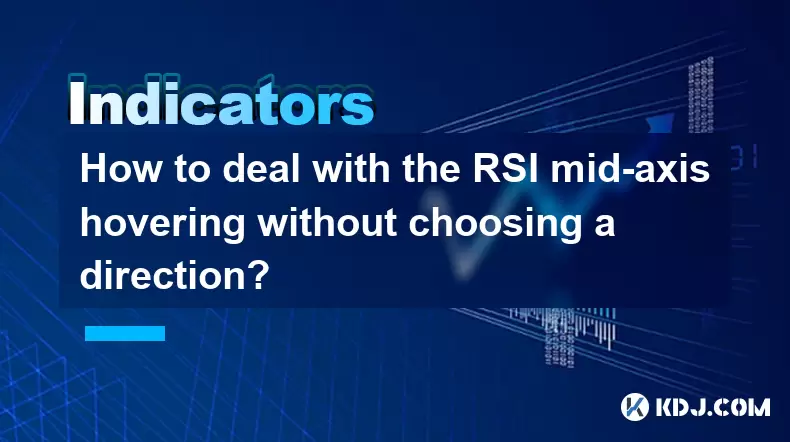
How to deal with the RSI mid-axis hovering without choosing a direction?
Jun 17,2025 at 02:02am
Understanding RSI Mid-Axis Hovering in Cryptocurrency TradingThe Relative Strength Index (RSI) is a popular momentum oscillator used by traders to assess whether an asset is overbought or oversold. In cryptocurrency markets, it's common for the RSI to hover around its mid-axis, typically at the 50 level, without showing a clear upward or downward trend....
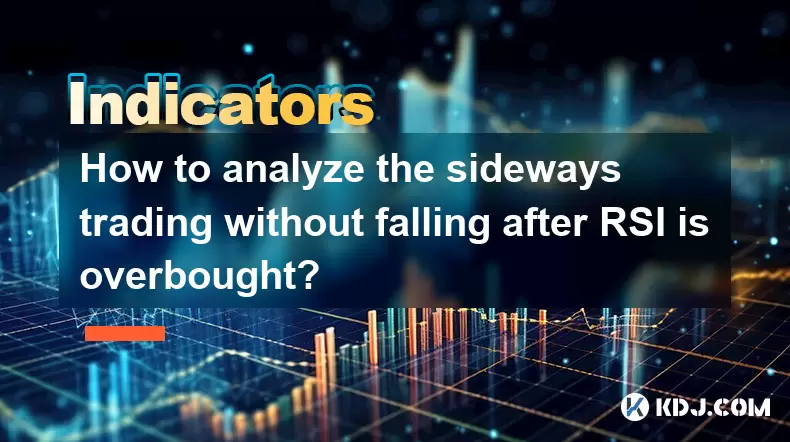
How to analyze the sideways trading without falling after RSI is overbought?
Jun 17,2025 at 04:14am
Understanding RSI and Its Role in Cryptocurrency TradingThe Relative Strength Index (RSI) is a momentum oscillator used to measure the speed and change of price movements. In the context of cryptocurrency trading, it helps traders identify potential overbought or oversold conditions. When the RSI exceeds 70, it typically signals that an asset may be ove...
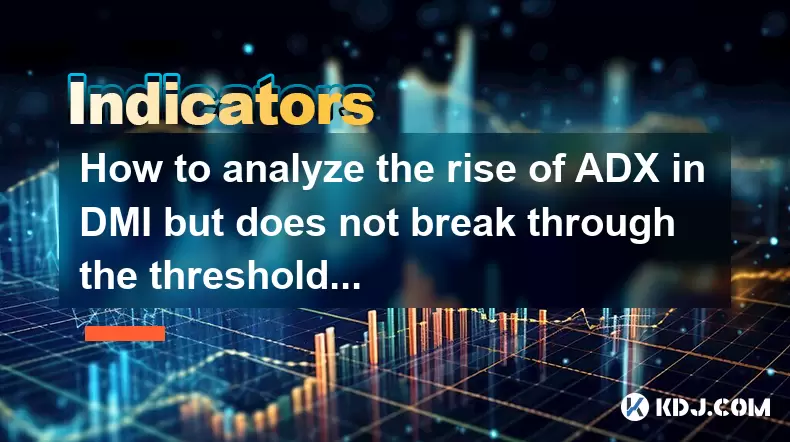
How to analyze the rise of ADX in DMI but does not break through the threshold?
Jun 16,2025 at 11:49pm
Understanding ADX and DMI in Cryptocurrency TradingIn cryptocurrency trading, ADX (Average Directional Index) is a technical indicator used to measure the strength of a trend. It works in conjunction with the DMI (Directional Movement Indicator), which includes two components: +DI (Positive Directional Indicator) and -DI (Negative Directional Indicator)...

How to confirm the effectiveness of the average price line support in the time-sharing chart?
Jun 17,2025 at 12:56am
Understanding the Time-Sharing Chart and Its RelevanceIn cryptocurrency trading, time-sharing charts play a crucial role in analyzing short-term price movements. These charts typically display price fluctuations over a specific period, often ranging from minutes to hours. Traders rely on them to make quick decisions based on real-time data. The average ...

What does it mean when the momentum indicator breaks above the zero axis?
Jun 17,2025 at 12:43am
Understanding the Momentum IndicatorThe momentum indicator is a technical analysis tool used to measure the speed or velocity of price movements in cryptocurrency markets. It helps traders identify potential trend reversals, overbought or oversold conditions, and confirms existing trends. The indicator typically oscillates around a zero line, with value...

Is the double bottom pattern of the Williams indicator reliable?
Jun 17,2025 at 03:56am
Understanding the Williams Indicator and Its SignificanceThe Williams %R indicator, often referred to as Williams Percent Range, is a momentum oscillator used in technical analysis to identify overbought or oversold conditions in the market. Developed by Larry Williams, this indicator fluctuates between 0 and -100, with readings above -20 indicating ove...

How to deal with the RSI mid-axis hovering without choosing a direction?
Jun 17,2025 at 02:02am
Understanding RSI Mid-Axis Hovering in Cryptocurrency TradingThe Relative Strength Index (RSI) is a popular momentum oscillator used by traders to assess whether an asset is overbought or oversold. In cryptocurrency markets, it's common for the RSI to hover around its mid-axis, typically at the 50 level, without showing a clear upward or downward trend....

How to analyze the sideways trading without falling after RSI is overbought?
Jun 17,2025 at 04:14am
Understanding RSI and Its Role in Cryptocurrency TradingThe Relative Strength Index (RSI) is a momentum oscillator used to measure the speed and change of price movements. In the context of cryptocurrency trading, it helps traders identify potential overbought or oversold conditions. When the RSI exceeds 70, it typically signals that an asset may be ove...

How to analyze the rise of ADX in DMI but does not break through the threshold?
Jun 16,2025 at 11:49pm
Understanding ADX and DMI in Cryptocurrency TradingIn cryptocurrency trading, ADX (Average Directional Index) is a technical indicator used to measure the strength of a trend. It works in conjunction with the DMI (Directional Movement Indicator), which includes two components: +DI (Positive Directional Indicator) and -DI (Negative Directional Indicator)...
See all articles

























































































